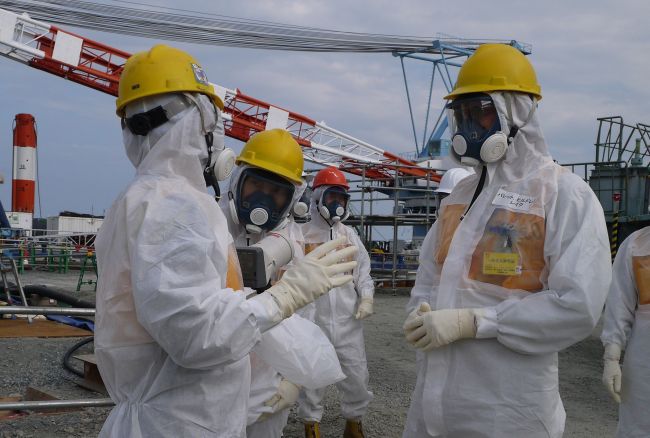Japan to conduct detailed cesium survey off Fukushima
By Korea HeraldPublished : Sept. 16, 2013 - 20:03
Japan’s Nuclear Regulation Authority has decided to conduct a survey on about 600,000 spots on the seabed east of the Fukushima No. 1 nuclear power plant to check for radioactive contamination in the ocean, sources said.
Data concerning the contamination of the seabed is indispensable for assessing the possible long-term impact on fishery products. The NRA, whose surveys have so far covered about 200 spots each, decided to substantially expand the number in view of growing concerns at home and abroad over marine products due to leaks of contaminated water from the crippled plant.
The NRA plans to compile the results of the survey in spring.
Data concerning the contamination of the seabed is indispensable for assessing the possible long-term impact on fishery products. The NRA, whose surveys have so far covered about 200 spots each, decided to substantially expand the number in view of growing concerns at home and abroad over marine products due to leaks of contaminated water from the crippled plant.
The NRA plans to compile the results of the survey in spring.

According to the sources, the NRA will conduct a pollution survey in a 1,000-square-kilometer area off the Fukushima plant. The area extends 20 kilometers east to west and 50 kilometers north to south.
In the survey, a ship will lower a rubber tube containing a measurement device, connected to the ship by a cable, to the seabed and measure radiation levels every meter to check cesium densities. The device was recently developed by the University of Tokyo and other organizations.
Previously, the NRA collected marine soil and analyzed cesium densities on a ship. Compared with a ground survey in which an airplane is used to cover a wide area, it is difficult for a conventional undersea survey to examine an extensive area.
Local fishermen recently stopped conducting test fishing operations after it was discovered that contaminated water was leaking from a storage tank and highly contaminated water inside a trench connected to a turbine building was flowing out to the plant’s harbor.
Repercussions have spread abroad, with South Korea banning all imports of marine products from Fukushima and seven other prefectures. The Japanese government has asserted that the leaks do not affect the sea beyond the harbor. The government believes that cesium detected in some fish was emitted immediately after the nuclear crisis began in March 2011.
“If we can check where cesium is accumulated by comprehensively covering the seafloor that has yet to be surveyed, we can utilize the data to control contamination,” an official of the Secretariat of the NRA said.
The NRA decided to minutely check radioactive contamination on the seabed off the Fukushima No. 1 nuclear power plant because the volume of data collected in previous surveys is small and therefore inadequate to assess cesium’s impact on fishery products. By increasing the number of survey spots from 200 to 600,000, it will be possible to check radioactive contamination in the ocean over an entire area, not at separate points.
International criticism of Japan is growing as the contaminated water leak problem at the Fukushima plant becomes serious. Some countries say Japan is not releasing enough information about the ocean contamination. “Basic data is lacking,” said an expert attending the NRA meeting.
The NRA must use the collected data to quickly examine ocean contamination and assess cesium’s impact on fishery products. It also should explain to the public about the risks involved at an appropriate time. This will help dispel people’s concern about radioactive leaks.
(News Desk, The Yomiuri Shimbun)
-
Articles by Korea Herald









![[Hello India] Hyundai Motor vows to boost 'clean mobility' in India](http://res.heraldm.com/phpwas/restmb_idxmake.php?idx=644&simg=/content/image/2024/04/25/20240425050672_0.jpg&u=)









